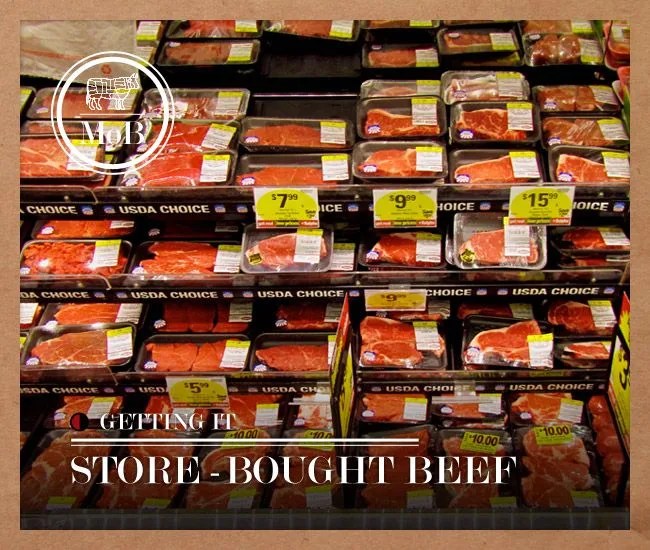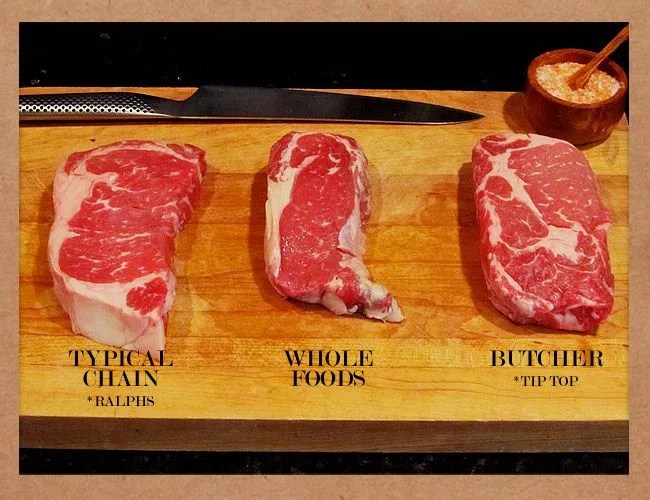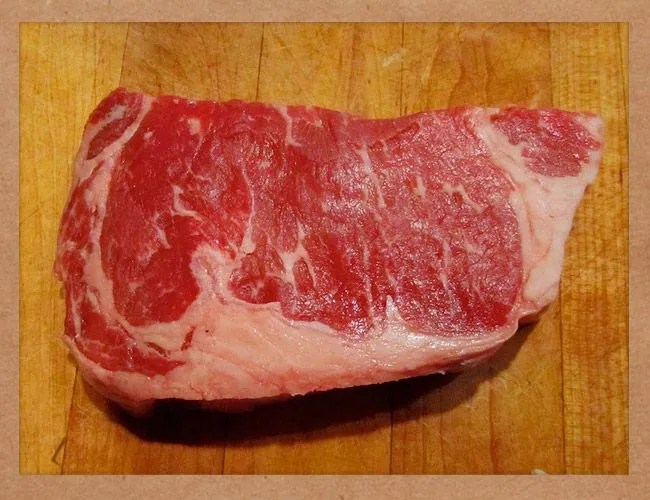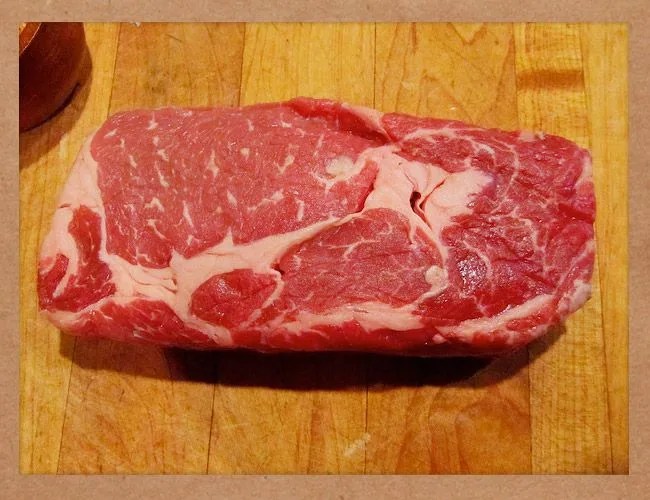 SP
SPBuying a steak to grill is as easy as trotting into the Piggly Wiggly, Vons or Safeway down the street and grabbing one of many plastic wrapped Styrofoam packages, right? Not so fast, kemosabe. If you’re the shy type looking to avoid eye contact or a conversation, that might be the way to go. You can certainly get a steak, but what you’re getting — and the quality of your selection — varies depending on where you go. While the prime, choice and select USDA grades are fairly well known, there’s more to a fine steak than just fat marbling. We visited three purveyors — the local supermarket (A & P, Ralphs, Giant), Whole Foods, and Tip Top (substitute your local butcher shop), a highly-regarded butcher shop near San Diego — to examine more closely (sans photoshop and fancy lenses) the type and quality of beef available.
We also picked up a boneless rib-eye from each and cooked it to medium rare in a cast iron skillet. You know, for good measure. “Research” and all.
Read more after the jump.


First, let’s talk grain and grass. Most beef comes from cattle that start life grazing before being penned and fattened with a grain mash. Individual animals quickly grow in size from the lack of activity and the richness of their diet. Grain-fed cattle are 1,200-1,400 pounds at slaughter, usually between 16-24 months old; their meat inherits a grain-fed flavor to related directly to the soon-to-be roast beast’s intensive diet.
A much smaller number of ranchers exclusively feed their cattle grass by grazing during warm months and eating hay fodder in the winter. These animals are smaller, tending toward 1,000-1,200 pounds at slaughter time, and older (up to 30 months) because the amount of activity and lower caloric value of the feed necessitates more time to bulk up. The result is meat with a distinctive look and taste. With less fat marbling (what fat remains has a yellowish tinge), grass-fed beef will rarely rate higher than “select” under the USDA system. The meat has the “gamey” flavor reminiscent of venison or lamb, which is a result of higher carotene levels from the cattle’s grass diet. As an added bonus, grass-fed beef has a higher ratio of omega-3 to omega-6 fatty acids — 1:2 in grass-fed, versus 1:7 to 1:14 in grain-fed.



